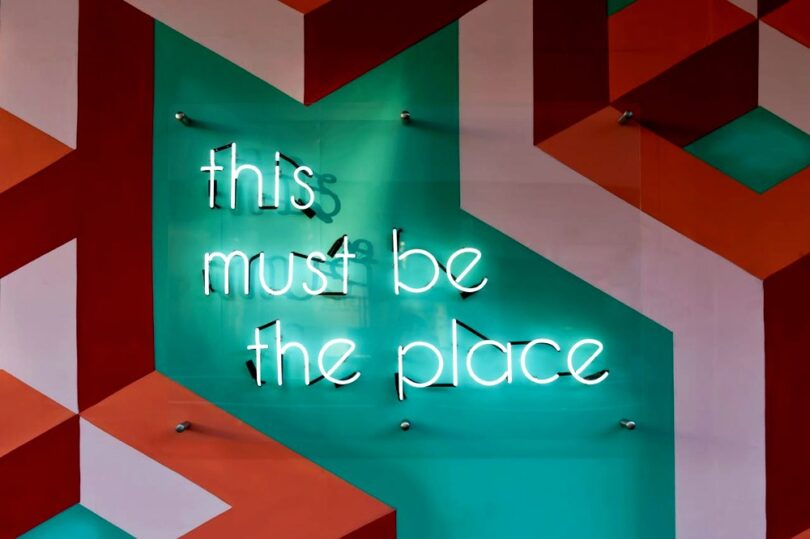In the bustling marketplace of today, establishing a distinctive brand identity is crucial. A key component of this identity is corporate signage. It’s not just about marking a location; it’s a visual shout-out to your audience, embodying your brand’s values and character. Think of company signs as the face of your brand—what do you want it to express? It’s about making a memorable impression, one that sticks with people long after they’ve passed by your sign. This goes beyond mere aesthetics; it’s about weaving your brand’s narrative into the fabric of everyday life. Effective business sign design becomes a silent yet potent communicator, telling your brand’s promise to everyone who glances its way.
The Conceptualization Phase
Core Message and Brand Values
The journey to crafting an impactful custom business sign begins with a deep dive into the heart of your brand. What is the core message you want to communicate? Identifying this foundational pillar is essential because it guides every design decision you’ll make down the line. Your brand values are the compass that steers the creative process, ensuring that the sign not only captures attention but also conveys the character of your business. This phase is about introspection, about peeling back the layers to reveal what truly makes your brand unique.
Understanding Your Target Audience
A company sign design must echo the preferences and expectations of your target audience. Who are they? What appeals to them? Understanding your audience is about bridging the gap between your brand’s identity and the people you aim to attract. Whether it’s through style, color, or messaging, every element of the sign should speak directly to the minds of your intended audience, making them feel understood.
The Significance of a Business Logo
The business logo is more than just a graphic; it’s the emblem of your brand’s identity. Its integration into your signage is pivotal, as it transforms the sign from a mere marker into a statement of your brand’s presence. Creating business logos on a sign can communicate professionalism, reliability, and identity, making it a critical component in the conceptualization phase.
Preliminary Design Considerations
Before the actual design work begins, setting the stage with preliminary considerations is crucial. This includes evaluating the physical space where the company signs will be placed and understanding the visual competition in the area. It’s also the time to think about the message hierarchy—what needs to stand out and what supports the main message. These early decisions lay the groundwork for sign design for businesses that not only look good but also work effectively in their intended environment.
The Design Phase: Crafting the Sign
Selecting the Right Colors and Fonts
The selection of colors and fonts is a pivotal step in business sign design tips because these elements play a significant role in readability, emotional impact, and brand recognition. Here’s a guide to making these crucial choices:
- Understand Color Psychology: Different colors can trigger different emotions. For instance, blue conveys trust and reliability, while green is often associated with growth and health. Choose colors that align with the emotions you want your brand to evoke.
- Contrast for Readability: Ensure there’s sufficient contrast between the background and text colors to make your sign easy to read from a distance.
- Font Personality: Choose a font that reflects the personality of your brand. A tech company might opt for a sleek, modern font, while a bakery might prefer something more whimsical.
- Legibility is Key: While it might be tempting to choose an intricate font, readability should never be compromised. Ensure the font is clear and legible from afar.
- Consistency Across Branding: Your sign’s colors and fonts should be consistent with your other branding materials to create a cohesive brand identity.
Choosing the right colors and fonts for your sign is not just about aesthetics; it’s about making strategic decisions that enhance the sign’s impact. These elements are crucial in capturing the essence of your brand and ensuring that the sign communicates your message effectively to your target audience.
Size and Scale
A sign must be large enough to be seen and read from a distance, yet it should not overpower the space it inhabits. This balance is crucial in creating a sign that is both effective and harmonious within its environment. Consideration of the sign’s visibility from different angles and distances is essential, as is an understanding of how it fits within the local landscape.
Professional Design Services
Leveraging professional signage design services can transform a good sign into a great one. These experts bring a wealth of knowledge and experience, ensuring that every aspect of the sign—from concept to final design—aligns with best practices and the latest trends. They can offer insights into how best to convey your brand’s message, making adjustments that refine and elevate the overall design. Working with professionals can also help navigate technical challenges, ensuring that the final product is not only beautiful but also durable and compliant with local regulations.
Material Selection and Manufacturing
Choosing Durable Materials
This decision impacts not just the aesthetic appeal but also the sign’s ability to withstand environmental challenges like weather conditions, sunlight exposure, and wear and tear over time. Materials such as high-grade metals, durable plastics, or tempered glass can offer both the elegance and endurance needed to maintain the sign’s appearance and functionality. This selection process is a careful consideration of factors such as location, climate, and the expected lifespan of the sign, ensuring that your investment continues to pay dividends in the form of a sign that remains vibrant and effective for years to come.
The Manufacturing Process
This journey often involves precision cutting, assembly, and the integration of various materials and components. It’s a collaborative effort that might include designers, engineers, and fabricators working together to ensure that every detail of the sign reflects the initial vision. Whether it involves intricate lighting systems or complex structural elements, the manufacturing process is where your sign begins to take tangible form, moving one step closer to making a real-world impact.
Ensuring Quality in Production
The commitment to quality in the production of business signs is non-negotiable. It’s a multi-faceted endeavor that ensures the final product not only meets but exceeds expectations. Here’s how to ensure quality throughout the production process:
- Select Reputable Suppliers: Begin with high-quality materials by choosing suppliers with a proven track record of excellence. This ensures the foundation of your sign is solid.
- Adopt Rigorous Quality Control Measures: Implement a series of quality checks at various stages of production. This might include inspections of materials, midway production assessments, and final evaluations before the sign leaves the manufacturing facility.
- Utilize Advanced Manufacturing Techniques: Employ state-of-the-art manufacturing technologies that enhance precision and reliability. Techniques such as digital printing, CNC machining, and laser cutting contribute to superior craftsmanship.
- Train and Retain Skilled Craftsmen: Ensure that the people involved in the manufacturing process have the necessary skills and are committed to maintaining high standards. Regular training sessions can keep the team updated on the latest techniques and standards.
- Feedback Loops: Incorporate feedback from the installation team and end-users to identify areas for improvement. This continuous loop of feedback and adjustment can lead to enhancements in quality over time.
A commitment to quality at every stage of production not only results in a superior sign but also reinforces your brand’s reputation for excellence and reliability. This meticulous approach to quality assurance is what differentiates a sign that merely looks good from one that stands the test of time, maintaining its integrity.
Innovations in Sign Manufacturing Techniques
The sign manufacturing industry is continually evolving, with innovations and technologies emerging to enhance both the production process and the final products. Advances such as 3D printing, sustainable materials, and integrated digital components offer exciting possibilities for business sign design services. These innovations not only allow for greater creativity and flexibility in design but also contribute to sustainability.
The evolution of corporate signage is poised to embrace even more innovative technologies and design philosophies. Digital integration, sustainability, and interactive elements are just the beginning of how signs will continue to evolve. As we embrace the future, the role of signs in crafting a brand identity and facilitating connections with the audience will only magnify, making every step in the design and creation process more significant than ever.
Photo by Tim Mossholder.








